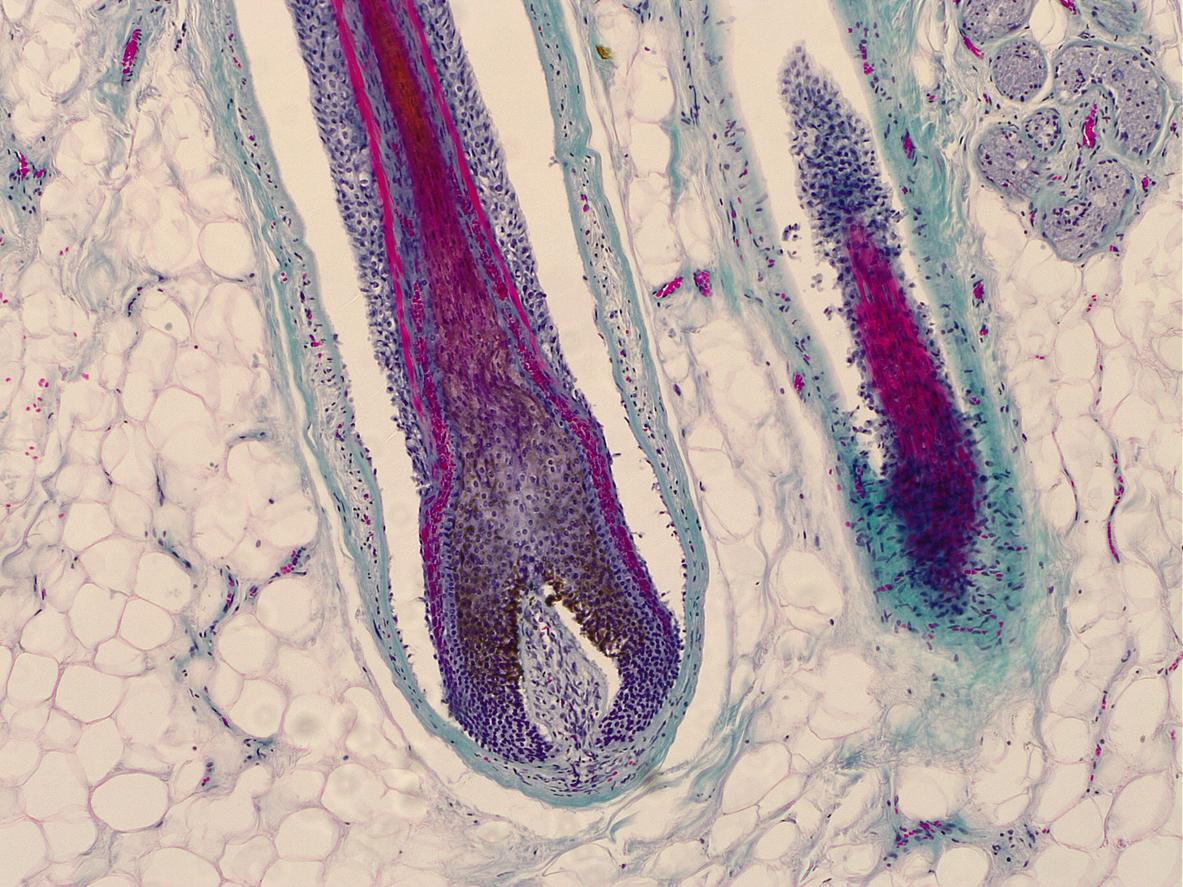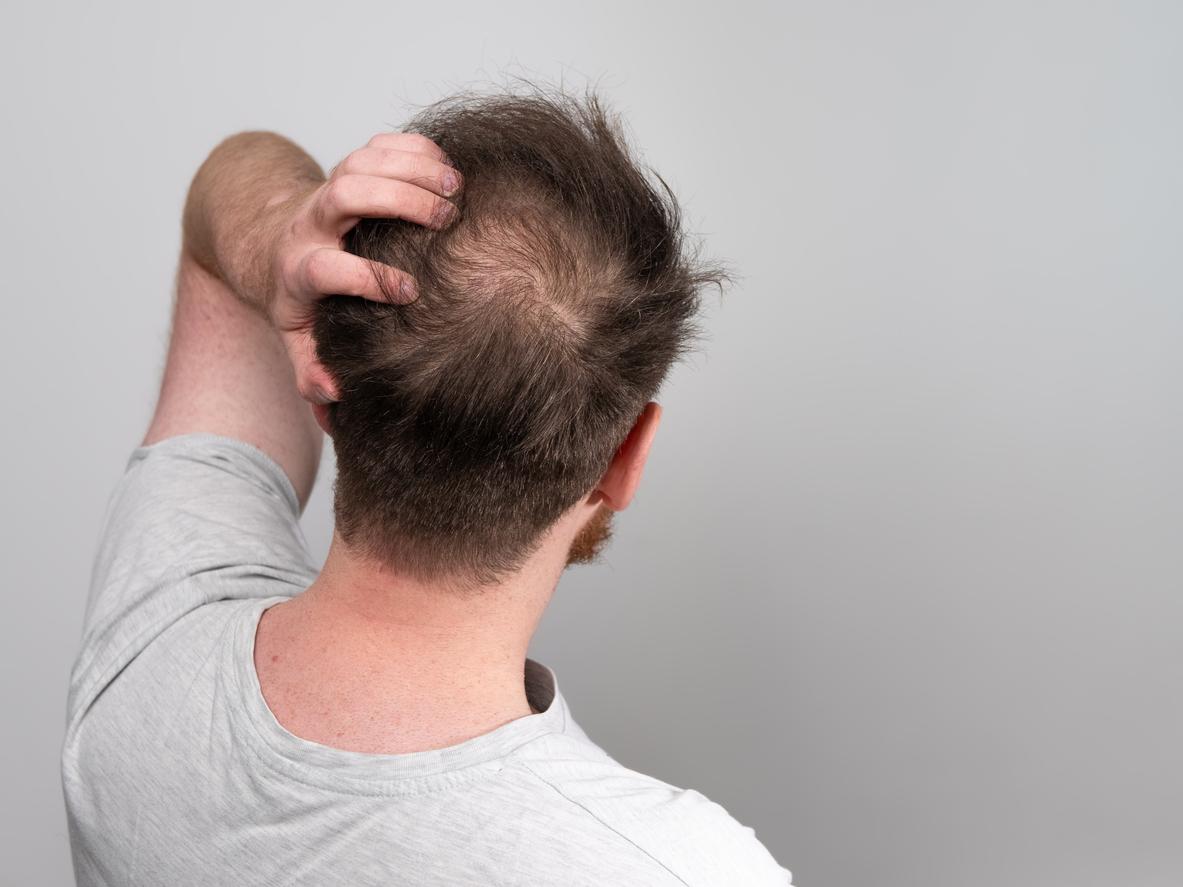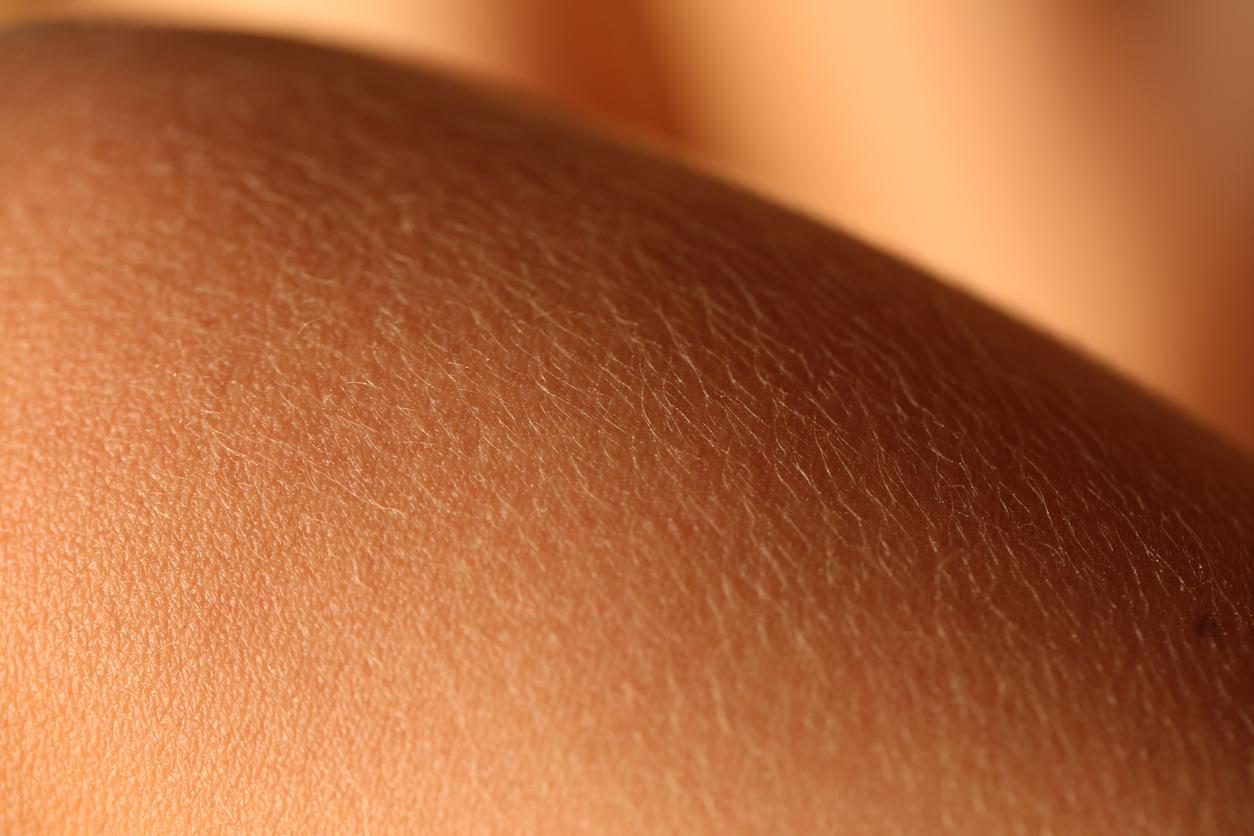Researchers have succeeded in creating hair follicles using 3D printing: a discovery that could offer significant advances in skin grafting and the treatment of skin conditions.

- Researchers have successfully created 3D printed hair follicles in human skin tissue grown in the laboratory.
- It will take years to develop skin grafts where hair can grow.
- However, this discovery opens new avenues for dermatological research and the improvement of skin grafts.
When it comes to transplants, hair may seem superfluous. However, hair follicles do not only have an aesthetic role. They participate in the regulation of body temperature by producing sweat, contain stem cells promoting healing or are entry points for topical medications.
Thus, the creation of hair follicles using 3D printing by the team from the Polytechnic Institute Rensselaer is an important step forward. Their work was presented in the journal Science Advances.
Skin : a “bio-ink” makes it possible to print hair follicles in 3D
Researchers who had already managed to “to print” skin tissues, this time worked to create skin carrying follicles. They began by allowing samples of human skin cells to divide and multiply in the laboratory until there were enough of them. They then mixed them with proteins and other materials to create a “bio-ink”. Using an extremely fine needle to deposit this substance, the printer “built” the skin layer by layer, while creating channels. Over time, skin cells migrated into these channels and formed follicular structures that could eventually develop into hair.
“Our work is proof that hair follicle structures can be created in a very precise and reproducible manner using the bioprinting 3D. This type of automated process is necessary to make possible the future biomanufacturing skin”, explained in a communicated THE Pr Pankaj Karande who led the study.
“Some studies have shown that if these cells are grown in a three-dimensional environment, they can potentially create new hair follicles or hair shafts, and our study builds on this work”adds the expert.

Hair, skin graft, dermatological test: many possible applications
However, the specialist warns that it will still take several years of research to create skins allowing hair growth. Indeed, at present, these Fabrics have a lifespan of only two to three weeks. The hair shaft does not have time to develop.
“The team’s future work aims to extend this period, allowing the hair follicle to mature further.”. If scientists succeed, their discovery could have several important applications such as skin grafts or improving treatments for burns and other skin conditions.
3D printing of hair follicles could also be of interest in the field of dermatological research. Indeed, the first safety tests of cosmetics and topical medications are carried out on artificial skin tissues. “Currently, contemporary skin models – engineered structures that mimic human skin – are quite simple. Increasing their complexity by adding hair follicles would give us even more information about how the skin interacts with topical products.”explains Pr Carolina Catarino, first author of the study.

















